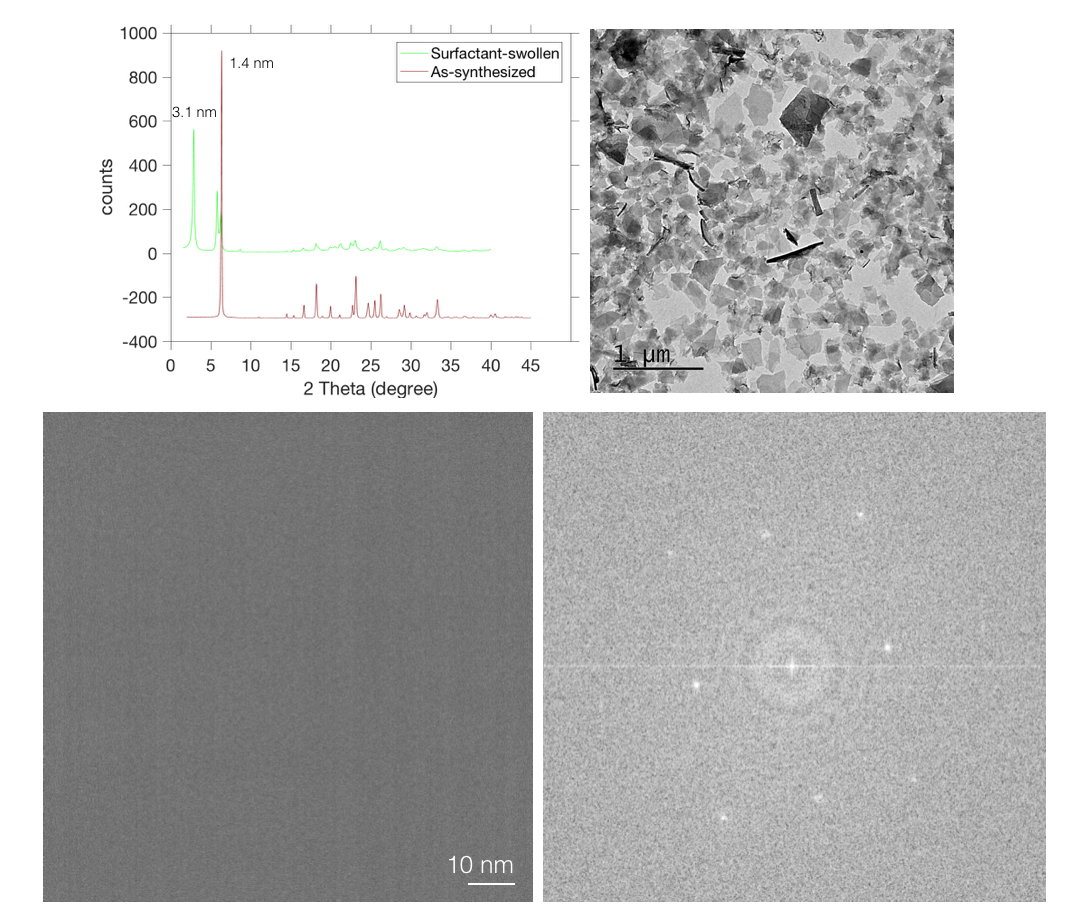Two-dimensional atomically bridged nanoporous silicate
Two-dimensional nanoporous materials are highly attractive for the synthesis of the next-generation membranes, capable of delivering gigantic permeance as well as a sharp molecular cut-off for energy-efficient separations. However, synthesis of such two-dimensional nanoporous sheets with a precise array of molecular hugging nanopores is not trivial. One of the leading approaches to achieve this is the top-down synthesis involving the crystallization of a layered nanoporous material followed by exfoliation of layers. Herein, for the first time, we report a nm-thick, two-dimensional silicate, RUB15-nanosheet, consisting of atomically bridged arrays of 4 and 6-member silica rings, synthesised by exfoliation of layered RUB-15, a precursor to the sodalite zeolite.
RUB-15 layers were synthesised by the hydrothermal synthesis route using a modified method reported by Gies and co-workers [1]. The as-made material was confirmed to be RUB-15 using X-ray diffraction, Si29 MAS NMR and electron diffraction. Ion-exchange of RUB-15 with a C16-cationic surfactant was performed in order to increase the inter-layer spacing from 14.2 Å to 30 Å. Finally, the atom-thick single layer silicate (RUB-15 nanosheets) was achieved by the melt compounding technique reported before by our group [2-3]. RUB15-nanosheet crystallinity was investigated by TEM and HRTEM, which confirmed a highly crystalline orthorhombic structure. A uniform thickness-contrast in TEM along with the height profile in AFM mapping of nanosheets confirmed a successful exfoliation.

[1] Gies et al. Angew. Chem. 1996, 108, 3041-3044.
[2] Agrawal et al., Advanced Materials, 2015, 27, 3243-3249.
[3] Varoon et al., Science, 2011, 334, 72-75.